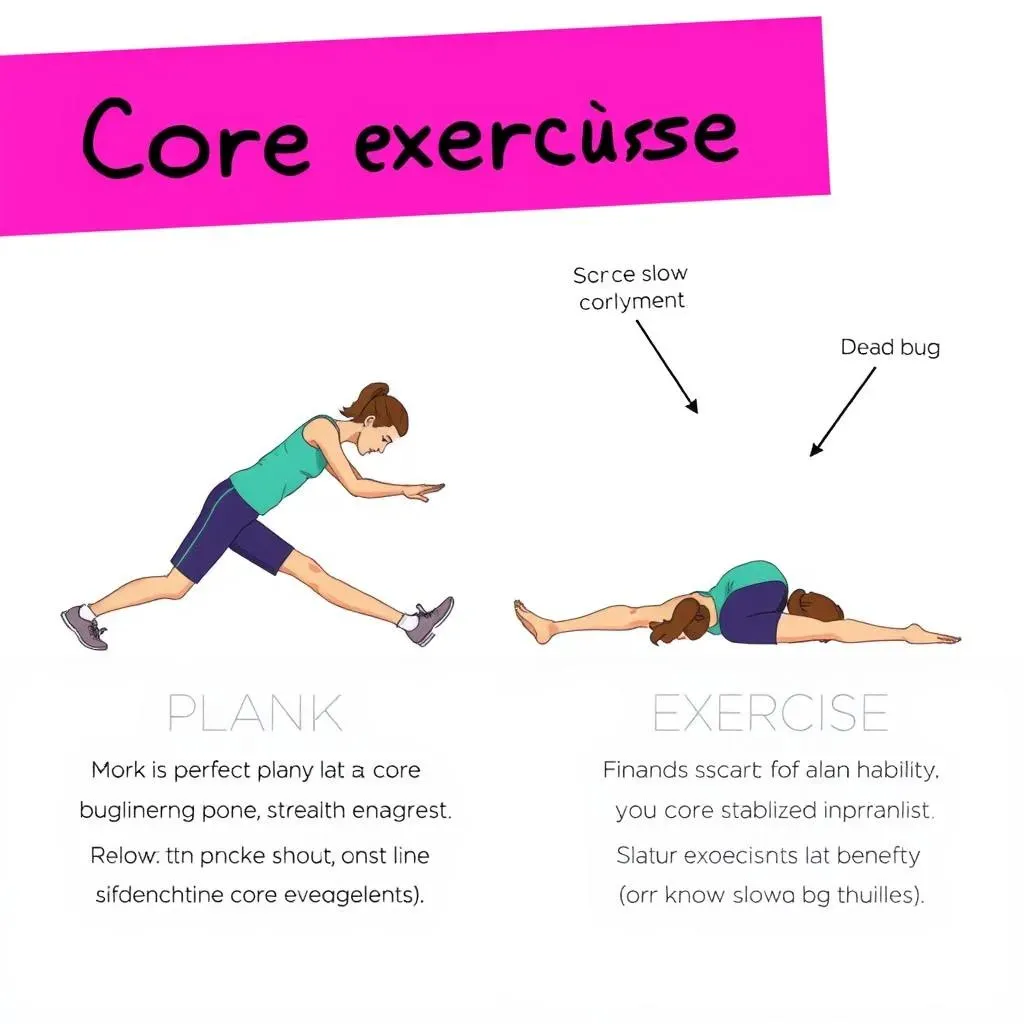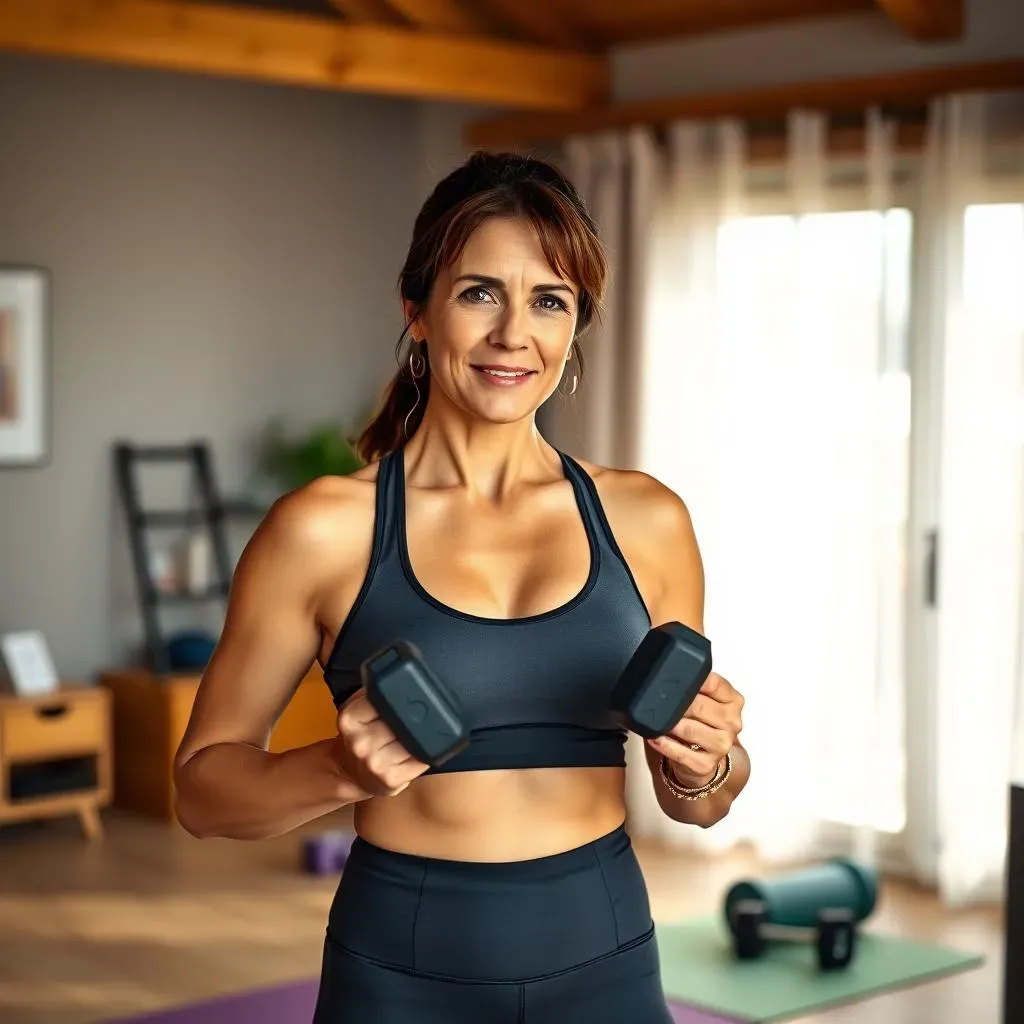Table of Contents
Hey there, ladies! Are you ready to feel stronger, more stable, and totally empowered? Then let's talk about core workouts at home for women. Forget those endless crunches; a truly strong core is about so much more than just a six-pack. It's the foundation for everything you do, from walking to lifting groceries to rocking that dance floor. In this article, we're ditching the gym and bringing the power to your living room. We will explore why a strong core is crucial for women's overall health and fitness. Next, I'll show you a variety of effective exercises that you can do anywhere, without any fancy equipment. We'll then guide you through building your own routine and discuss how to stay consistent with your training. So, if you're ready to build a core that's not only strong but also functional, keep reading. Let's get started on this journey to a more powerful you!
Why Core Strength Matters for Women: More Than Just Abs

Why Core Strength Matters for Women: More Than Just Abs
Okay, let’s get real. When people talk about core workouts, they often picture washboard abs. But for us women, a strong core is about way more than just looking good in a bikini. It's the powerhouse of your body, the central support system that keeps you upright, balanced, and moving with ease. Think of your core like the trunk of a tree; it needs to be sturdy so the branches (your arms and legs) can move freely and powerfully. A strong core helps with everything from picking up your kids to carrying groceries without throwing out your back. It improves your posture, reduces back pain, and even makes your other workouts more effective. It’s not just about vanity; it's about feeling strong and capable in your everyday life.
Effective Core Exercises You Can Do at Home

Effective Core Exercises You Can Do at Home
The Plank: Your Core's Best Friend
Alright, let’s get into the good stuff: exercises! First up, we have the plank. It might look simple, but trust me, it’s a powerhouse move. It engages your entire core, from your abs to your lower back, and even your shoulders. Imagine your body as a straight line from your head to your heels, like a sturdy wooden plank. Hold that position, keeping your core tight, and feel the burn. Don't let your hips sag or your back arch; keep everything engaged. Start with 30 seconds and work your way up to a minute or more. It's like a mini full-body workout all in one pose, and you can do it anywhere!
If you're just starting out, don't worry about holding it for a long time. A shorter, perfect plank is way better than a long, sloppy one. Also, you can do it on your knees if the full plank is too challenging. The key is to maintain the proper form and feel the muscles working. You'll be surprised how quickly you'll get stronger. It's a great starting point for building core strength.
Dead Bug: Not as Scary as It Sounds
Next up, let's try the "dead bug." Don't worry, no actual bugs are involved! This exercise is fantastic for core stability and it's super gentle on your back. Lie on your back with your arms straight up towards the ceiling and your knees bent at a 90-degree angle. Now, slowly lower one arm behind your head while simultaneously extending the opposite leg towards the floor. Your lower back should stay pressed into the ground. It's like you're moving in slow motion, trying to keep everything still except the moving limbs. Bring your arm and leg back to the starting position, and repeat on the other side. This exercise really helps you control your core and prevent lower back issues.
The trick with the dead bug is to move slowly and with control. If you feel your lower back lifting off the floor, make the movements smaller. It's better to do a smaller movement perfectly than a larger movement incorrectly. Try to keep your core engaged throughout the exercise, and breathe smoothly. It's a great move to really feel those deep core muscles working. It’s also a good way to warm up for more intense exercises.
Exercise | How to Do It | Why It's Great |
|---|---|---|
Plank | Hold a straight line from head to heels, core engaged. | Engages entire core, builds stability and strength. |
Dead Bug | Opposite arm and leg lower while keeping back flat. | Improves core stability and control, gentle on the back. |
Creating Your Own Core Workout Routine at Home

Creating Your Own Core Workout Routine at Home
Alright, so you've got a taste of some awesome core exercises, now let's talk about putting it all together. Creating your own core workout routine at home is easier than you think, and it's all about finding what works best for you. First, think about your fitness level. If you're just starting out, don't try to be a superhero on day one. Start with 2-3 exercises, doing 2-3 sets of 10-12 reps for each. As you get stronger, you can increase the number of reps, sets, or try more advanced variations. The key here is consistency over intensity, so aim for 3-4 workouts a week. Listen to your body, and don't push through pain. Remember, building a strong core is a marathon, not a sprint. You're in charge of this journey, so make it fun and challenging!
Next, let’s talk about exercise selection. It's not just about doing tons of crunches (thank goodness!). A well-rounded core routine should include exercises that work all areas of your core: your front abs, your obliques (the sides of your core), and your lower back. Think of exercises like planks, dead bugs, and bird dogs as your foundation. Then, you can add in some rotational moves like Russian twists or bicycle crunches to challenge your obliques. Don’t be afraid to experiment and find exercises you enjoy doing. And remember, variety is key to preventing boredom and plateaus, so switch things up every few weeks. This way, you’ll keep challenging your core and seeing progress. The best workout routine is the one you actually stick to, so make it something you look forward to!
Workout Component | Details |
|---|---|
Frequency | 3-4 times per week |
Sets & Reps | Start with 2-3 sets of 10-12 reps |
Exercise Variety | Include front abs, obliques, and lower back exercises. |
Progression | Increase reps, sets, or difficulty as you get stronger |
Staying Consistent with Your Core Workouts at Home

Staying Consistent with Your Core Workouts at Home
Okay, you’ve got the moves, you’ve got the plan, but let’s be real: sticking with it is where most of us stumble. It's super easy to get excited about core workouts at home for women at first, but life happens, and suddenly your workout routine is on the back burner. So how do you make sure you actually stay consistent? First off, find a time that works for you and stick to it. Maybe it's first thing in the morning before the chaos of the day begins, or perhaps it's right after work to de-stress. Treat it like an important appointment that you can’t miss. Also, don't be afraid to make it fun! Blast your favorite music, find a workout buddy, or treat yourself to something nice after each workout. The goal is to make it a habit, something that you do without even thinking about it. And remember, it's okay to have off days, just don't let one bad day turn into a bad week.
Another thing that helps with consistency is setting realistic goals. Don’t try to go from zero to hero overnight. Start with small, achievable goals, and celebrate every milestone along the way. Maybe it’s doing 3 core workouts a week, or holding a plank for a full minute. As you achieve those goals, set new ones. This way, you're constantly progressing and feeling a sense of accomplishment. Also, make sure you are tracking your progress. Seeing how far you've come can be super motivating. Whether it’s writing it down in a journal, using a fitness app, or even just noticing how much easier those exercises are getting, tracking your progress can help you stay excited and consistent with your core workouts at home. Remember, you're not just building a stronger core; you're building a stronger you!
Tip | How to Implement |
|---|---|
Schedule it | Treat workouts like important appointments. |
Make it fun | Use music, a buddy, or rewards to stay motivated. |
Set realistic goals | Start small and gradually increase intensity. |
Track progress | Use a journal, app, or notice improvements. |
